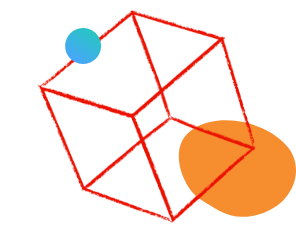This conversation has been locked due to inactivity. Please create a new post.



This conversation has been locked due to inactivity. Please create a new post.
![]()
What I need to do is hide or show a text field (may be many more fields in the future) based on an option I select in another dialog. Let's say there are two dialogs A and B. There is a dropdown in dialog A which has two options 'Hide' and 'Show' and a textfield in dialog B. If I choose 'Show' from dialog A, a field in dialog B should be made visible the next time I open dialog B. If I choose 'Hide' from dialog A, then that field must be hidden in dialog B. The field in dialog B needs to be hidden by default. In such a way, is it possible to hide or show fields in dialogs based on selections in other dialogs? Currently developing in AEM 6.4.
Solved! Go to Solution.
Hi,
i create something of similar for a project. In my case i use java code in order to change the dialog.
I attach here an example.
If i can suggest you, after using this way i think that it's better to change the design of your components in order to avoid this kind of behaviour.
It's better that elements of a dialog that are related, are configured in the same dialog. If you need to make this configuration because you have a "container" and elements configured for this container, is better that you try to create just only one dialog or manage this configuration by using page property (if it's possible).
@Override
protected void doGet(SlingHttpServletRequest request, SlingHttpServletResponse response)
throws ServletException, IOException {
BundleContext bundleContext = FrameworkUtil.getBundle(SessionService.class).getBundleContext();
ServiceReference<?> osgiRef = bundleContext.getServiceReference(SessionService.class.getName());
SessionService service = (SessionService) bundleContext.getService(osgiRef);
if (service != null) {
session = service.getSession();
String[] tabList = null;
String dialogPath = request.getParameter("dialogPath");
resourcePath = request.getParameter("resourcePath");
LOGGER.debug("dialogPath: "+dialogPath);
LOGGER.debug("resourcePath: "+resourcePath);
if (StringUtils.isNotBlank(dialogPath) && StringUtils.isNotBlank(resourcePath)) {
String tabPartialName = "image";
dialogPath += "/items/items";
Resource resource = request.getResourceResolver().getResource(resourcePath);
tabList = resource.getValueMap().get("nameoftabs", String[].class);
if (tabList != null && tabList.length > 0) {
WcmUtilsClassicUi.clearOldValueIntoResource(session, tabList, resource);
WcmUtilsClassicUi.clearOldDialog(session, dialogPath, tabPartialName);
updateDialogNodes(dialogPath, tabList, tabPartialName);
} else {
WcmUtilsClassicUi.clearOldDialog(session, dialogPath, tabPartialName);
}
}
} else {
LOGGER.error("Box - error on activate method: is null");
}
}
Views
Replies
Total Likes

I'm not sure of the requirements that you have but in order to achieve your use case, you would need to persist & cleanup the state of those fields either in JCR node/json or in browser via cookie/localStorage/sessionStorage etc. The reason is because you want to perform certain actions that are outside the scope of your original request in a stateless architecture.
You would definitely need to consider the end-to-end design when concurrent users may want to interact with the system, probably same page/same component use cases.
Views
Replies
Total Likes
YOu can write JQUery code to manipulate fields on the same dialog. For 2 different dialogs - never seen that uses case. However - i passed this to our Touch UI team to get their thoughts. (but best practice is 1-1 - all fields are on 1 dialog and have nothing to do with other dialogs)
Views
Replies
Total Likes
Hi,
i create something of similar for a project. In my case i use java code in order to change the dialog.
I attach here an example.
If i can suggest you, after using this way i think that it's better to change the design of your components in order to avoid this kind of behaviour.
It's better that elements of a dialog that are related, are configured in the same dialog. If you need to make this configuration because you have a "container" and elements configured for this container, is better that you try to create just only one dialog or manage this configuration by using page property (if it's possible).
@Override
protected void doGet(SlingHttpServletRequest request, SlingHttpServletResponse response)
throws ServletException, IOException {
BundleContext bundleContext = FrameworkUtil.getBundle(SessionService.class).getBundleContext();
ServiceReference<?> osgiRef = bundleContext.getServiceReference(SessionService.class.getName());
SessionService service = (SessionService) bundleContext.getService(osgiRef);
if (service != null) {
session = service.getSession();
String[] tabList = null;
String dialogPath = request.getParameter("dialogPath");
resourcePath = request.getParameter("resourcePath");
LOGGER.debug("dialogPath: "+dialogPath);
LOGGER.debug("resourcePath: "+resourcePath);
if (StringUtils.isNotBlank(dialogPath) && StringUtils.isNotBlank(resourcePath)) {
String tabPartialName = "image";
dialogPath += "/items/items";
Resource resource = request.getResourceResolver().getResource(resourcePath);
tabList = resource.getValueMap().get("nameoftabs", String[].class);
if (tabList != null && tabList.length > 0) {
WcmUtilsClassicUi.clearOldValueIntoResource(session, tabList, resource);
WcmUtilsClassicUi.clearOldDialog(session, dialogPath, tabPartialName);
updateDialogNodes(dialogPath, tabList, tabPartialName);
} else {
WcmUtilsClassicUi.clearOldDialog(session, dialogPath, tabPartialName);
}
}
} else {
LOGGER.error("Box - error on activate method: is null");
}
}
Views
Replies
Total Likes
Our team replied:
Hey there is a acs aem commons extension for this purpose… check if it helps
Views
Replies
Total Likes
Great response!
Views
Likes
Replies